French Architecture – History of Building Styles in France
The French can be thanked for many reasons, including their culinary prowess, clothing style, wines, and a plethora of important art styles, but let us not overlook their classical French architecture. Several significant events in the history of French architecture have given origin to some of the most recognized French architecture styles and functioned as an example for the majority of the world. In terms of Modern French architecture, a couple of names instantly come to mind: the world-renowned Dominique Perrault and Jean Nouvel. Today we will trace the development of architecture in France, and introduce you to some of the most famous French buildings.
The History of French Architecture
The recorded history of French architecture dates back to the Roman era when Gaul was governed by the Empire of Rome. Some noteworthy Galo-Roman buildings in France, such as the Amphitheater in Nîmes, Maison Carrée, or Alyscamps in Arles, have thankfully been conserved. Furthermore, the remnants of certain significant historical structures, such as the Pont du Gard aqueduct in Nîmes, may be discovered across France.
All of the traditional aspects of Roman architecture were present here as well, including the introduction and use of concrete, as well as the use of vaults and arches.
Pre-Romanesque Religious Structures
Following the unification of the Frankish clans under the rule of a single monarch, Clovis I, in the 5th century, a stronger focus was put on the construction of religious buildings. Based on the Merovingian church’s beliefs, architecture naturally reacted to these demands and served as a mediator and interpreter between the ordinary and the holy.
Church construction plans during this time period expanded on the Roman basilica style, but they were also affected by other sorts of architectural advances, some of which originated in the East.

Aside from the obvious cultural heritage of the Romans and other areas of influence, it is thought that the French had a few crucial innovations in this pre-Romanesque era that had not previously been seen. The sarcophagus has been elevated to be seen in this position. Regrettably, because most of the main churches were reconstructed after they became aesthetically obsolete, we can only know about the older French architecture styles via archaeological reconstructions and texts.
Saint Peter’s church at Vienne, Lyon, is an uncommon intact church from this period.
The Romanesque Period
The Romanesque style was the first cohesive style to emerge in Europe during the Middle Ages. The word essentially means “formed from Roman,” which is odd considering that it was the first significant thing to emerge after the Romans were defeated. Even if we accept the setting of the 10th century to be the forerunner of Romanesque architecture, pinpointing the precise date and place of its origins is challenging.
There are several instances of structures in France and Northern Italy from the 8th to the 10th centuries that have some Romanesque traits, which is known as Lombard Romanesque or First Romanesque style.
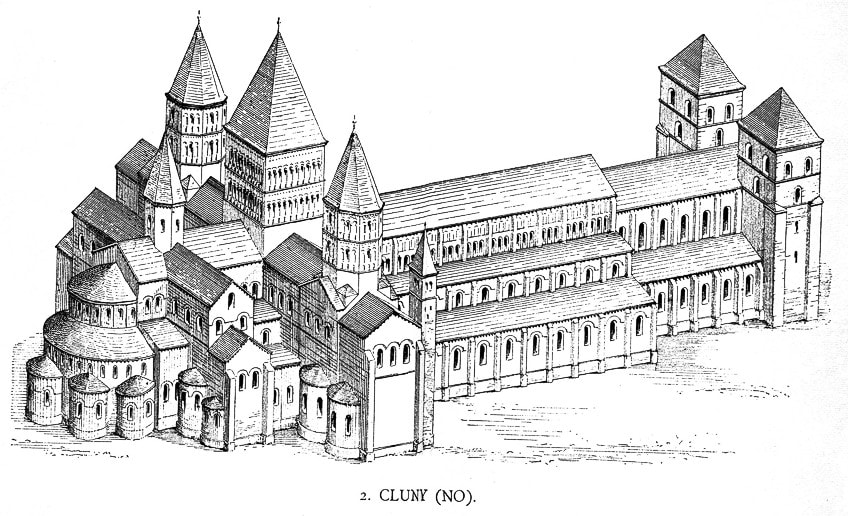
Nevertheless, they were constructed before the style became more well-known and developed, during a time when most Romanesque architecture was inspired by the Abbey of Cluny. Take note that France is connected with this style in any case, making it inextricably linked to the plot.
Early and late Romanesque styles are distinguished by strong walls and columns from which domes sprang, a minimal approach to embellishment and sculpture, and a rhythmic recurrence, both on the façade and in terms of construction. A typical feature is the use of three entrances leading into the nave.
Subsequently, beginning in the early 13th century, the buildings were progressively adorned with pinnacles and tall spires. These characteristics later influenced the recognizable Gothic aesthetic.
French Gothic Architecture
From the mid-12th century through 1500, French Gothic architecture dominated Europe. Even today, it is among the most distinctive French architecture styles, with a distinct character. Interestingly, the name was coined during the Renaissance and was formerly known as Opus Francigenum, which translates to “French labor.”
Early Gothic, High Gothic, and Late Gothic architecture are historically separated into several styles.
As with its predecessor, there are still debates over this strict distinction. The Early era was a direct descendent of Romanesque architecture, using the pointed arch as a design feature and accentuating the elevation of ceilings and walls. To accomplish this, architects coupled arcades with a gallery, a triforium, and a spire, which is the second line of arches put above the original arcade, typically with windows giving light and fresh air. To stabilize the construction, the architects devised flying buttresses, also known as counterforts, which were employed to support the high walls.

This architectural element eventually became one of the most identifiable marks of Gothic architecture, typically considered a piece of artwork or adornment. The high Gothic style continued the early canons, seeking higher building heights while making the construction lighter.
The two primary types of French architecture at the period, Rayonnant and Flamboyant, evolved from High Gothic architecture as well.
However, its builders were more concerned with two-dimensional aesthetic characteristics than architectural difficulties and actual utilization of space. The latter is meant to be the artistic “child” of the former, albeit the precise point of transformation was never specified. During this time, the goal to exhibit a light, yet intricate and towering structure, as well as to experiment with lights, was further explored. Several advances in glassware and window glazing occurred during the Rayonnant era, influencing the future shift in window design.
Renaissance of the Architecture in France
The Renaissance left its impact on practically every region of Europe, or at least the Western portion when it expanded from Italy. It became the most prevalent type of architecture in France, mostly used for the construction of chateaux and mainly connected with the royal family. After its start in the late 15th century, it swiftly developed into French Mannerism.
This French architectural style was best known by the name of Henry II.
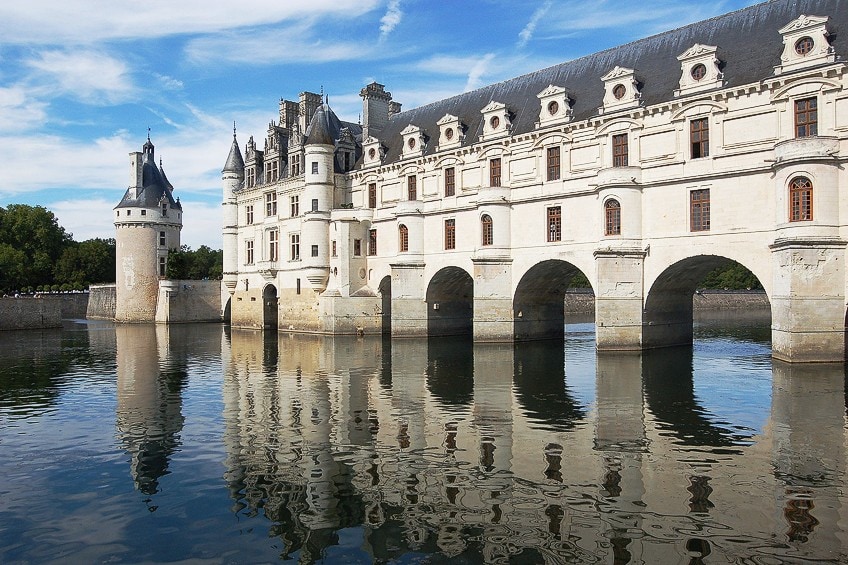
This was because he collaborated with Italian designers and painters to build the Palace of Fontainebleau. They also founded the First School of Fontainebleau, one of two institutions that heralded the era of institutionalized artistic creativity in France during the 16th and early 17th centuries.
The French Baroque Period
An era of French Baroque flourished during the reigns of French monarchs Louis XIII through XV. Since it became the embodiment of the open three-wing design with a unique twist, Paris’ Luxembourg Palace was deemed the style icon for all following French baroque projects. Salomon de Brosse’s design was the first to emphasize the entrance, such as the center wing, while making the two side wings look smaller in comparison to the central one. This became a defining feature of the Louis XIII aesthetic.
Other famous French buildings, such as the Palace of Versailles, were built using the same approach by three masters who cooperated to create a cornerstone of classical French architecture.
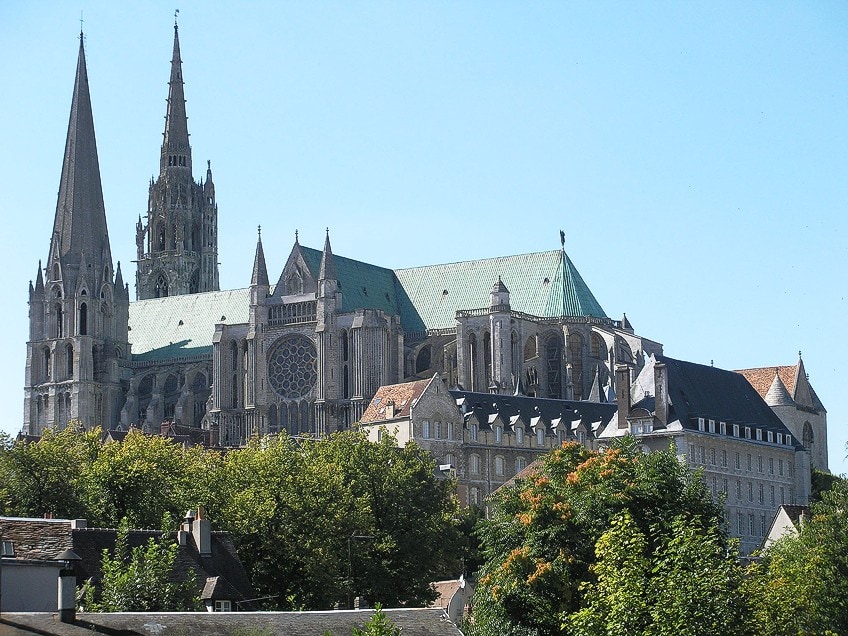
The notion of the French formal garden, in which geometry and structure take over nature, was adopted for this occasion. It went well with the design, which was inspired by Baroque homes but completed in a more typical French manner.
The Rococo Period of Architecture in France
Whereas the Renaissance and Baroque periods were initially linked with Italy, the Rococo period was born in France. The title is most probably a mash-up of the French terms stone and shell, both of which appear frequently. It bears many features with Late Baroque, with which it is usually synonymous, in terms of a more comic and loose approach to compositional and architectural design.
While the Baroque was typically more frivolous than the strict Renaissance, Rococo took this to its logical conclusion, giving an overtly non-symmetrical, flamboyant, curvy, and overly decorative style.

This Rococo luxury in decoration is sometimes ascribed to the parsimonious governments of Louis XV and Louis XVI, and this is not by coincidence, as they are both tied to it. Nevertheless, Rococo quickly became a worldwide style as it expanded throughout Europe, including Prague, Vienna, and Lisbon.
The Neoclassical Era of French Architecture
Rococo was quickly superseded by Neoclassicism, and while this occurred under Louis XVI’s reign, it may be linked to the tremendous changes that occurred in France at the close of the 18th century. Rococo was attacked by both those who associated it with the monarchy and historians who had little comprehension of the “playful” nature, dismissing it as bad taste (which is not to suggest that this issue should not be explored now).
Then emerged Neoclassicism as a restoration to order.
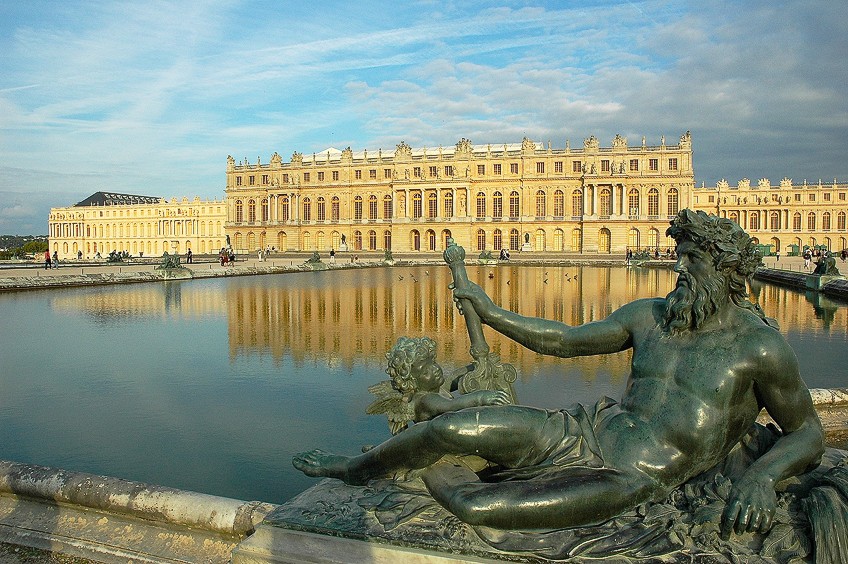
Several themes were prominent during the period, including the Greek Revival, which endured until the close of the 19th century when it was ultimately considered anti-modern and anti-progressive. It was contemporaneous with Romanticism and the Gothic Revival.
Strangely, the Greek Revival style was never popular among the ordinary people or the government, as though the regulated, rigid architecture just did not suit French tastes.
19th Century French Architecture
During Napoleon III’s reign in the second part of the nineteenth century, Paris was essentially renovated by Baron Haussmann. Many people regard Paris to be the most gorgeous capital on the planet, thanks in large part to the Second Empire era. Many of the older ones were improved, the streets were flanked by rows of trees, and the store facades were linked by stone cream tiles.
During this period, mansard roofing, which is formed like a trapezoid, became popular. This square roof has come to represent French architecture.
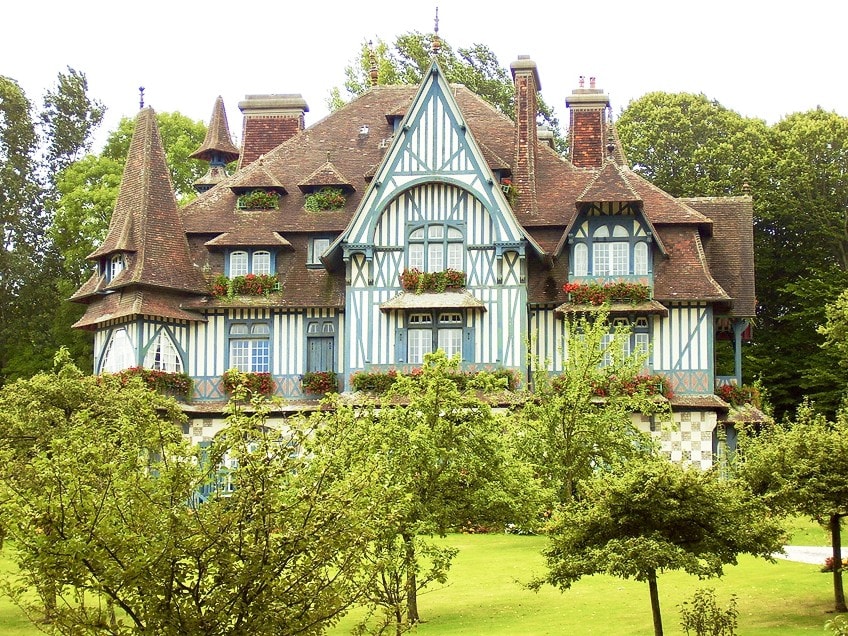
But at the other extreme, the 19th century marked the start of a new epoch in architecture worldwide. The Universal Exposition, held in Paris in 1889, was a significant global exposition during which the French presented their latest technical triumph, the Eiffel Tower. This was an emblem of the Belle Epoque, but it was also a method for the Parisians to show that they are keeping up with the contemporary world, right beside the English with their Crystal Palace.
The 1889 Exposition was succeeded by the rise of Art Nouveau, which was briefly adopted by the French before being quickly displaced by Art Deco, just before the outbreak of World War I.
Modern French Architecture
The 20th century was a time of great transformation, and this was true of modern French architecture as well. In the aftermath of WWI, two opposing factions surfaced: the Beaux-Arts heritage and the Modernists, headed by Robert Mallet-Stevens and Le Corbusier. Both schools lived side by side, even with Le Corbusier’s severe urban plans, which horrified the French people. He never had the opportunity to dismantle half of Paris’ historic heart, but his architectural designs affected the remainder of France, notably the exquisite Villa Savoye in Poissy, the French city’s suburbs.
Even when regarded negatively, Le Corbusier and his contemporaries had a lasting influence.

In history’s post-postmodernist era, we may enjoy Jean Nouvel’s gorgeous design, which has been created all over the world, as well as re-interpret the concept of beauty via all of his unique works. Moreover, the French have generated a few post-structuralists, most notably Jacques Derrida and Gilles Deleuze, who have impacted some of the world’s most notable builders, including Peter Eisenmann.
That is, the French persist to play an essential role in architectural history, although in unexpected ways.
Famous French Buildings
Now that we have explored the history of classical French architecture, as well as the development of modern French architecture, we can move on to examining some of the most famous French buildings. Many of these buildings are located in Paris, the heart of Fench culture. This list includes a few of the most famous French buildings erected over the years.
Notre-Dame (Paris, France)
| Year Completed | 1330 |
| Architect | Childebert I (498 AD – 558 AD) |
| Purpose | Cathedral |
| Location | Paris, France |
Since the Middle Ages, Notre-Dame de Paris has served as the city of Paris’ cathedral. It is a Gothic example of a major shift in the Romanesque architectural style, in regards to both naturalistic ornamentation and novel methodologies.
Exterior arched struts, particularly, take on the lateral force of high vaults via a system of flying buttresses and give adequate strength and stiffness to allow the employment of comparatively slim reinforcements in the main arcade.

The cathedral is located on the Île de la Cité, an islet in the center of the Seine River, on the location of the very first Christian church in Paris, the Basilica of Saint-Étienne, and a previous Gallo-Roman monastery which was built in 528. The bishop of Paris, Maurice de Sully, started building in 1163 under the rule of King Louis VII, and it was completed in 1330.
The spire was built during a refurbishment by Eugène-Emmanuel Viollet-le-Duc in the 1800s, but it was razed to the ground in 2019.
Hôtel de Soubise (Paris, France)
| Year Completed | 1708 |
| Architect | Pierre-Alexis Delamair (1675–1745) |
| Purpose | Mansion |
| Location | Paris, France |
The Hôtel de Soubise was constructed for the prince de Soubise. François de Rohan purchased the Hôtel de Clisson in 1700, and in 1704 the designer Pierre-Alexis Delamair was commissioned to rebuild and redesign the structure. Delamair created the expansive courtyard.
A façade with twin colonnades on the furthest end of the courtyard is crowned by a set of sculptures by Robert Le Lorrain depicting the four seasons.
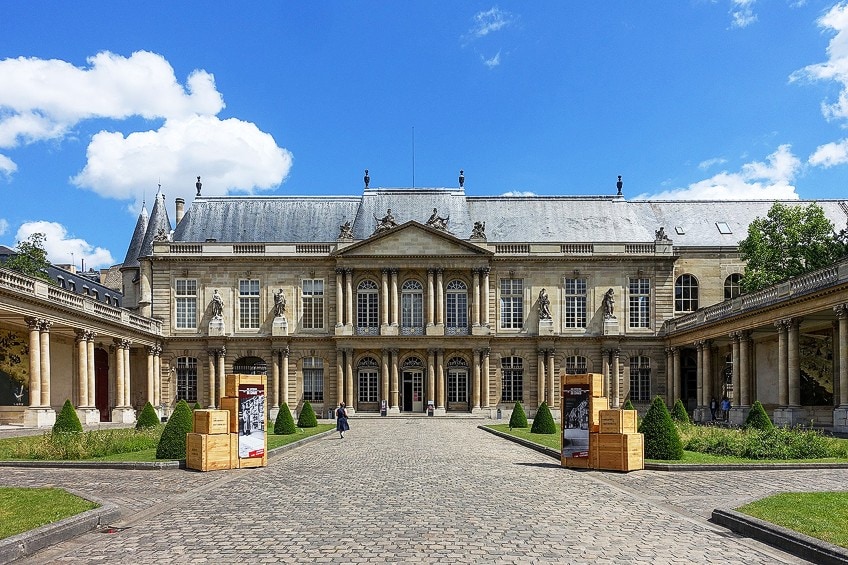
Delamair was succeeded in 1708 by Germain Boffrand, who completed all of the interior décor for the prince’s son on the ground level and the princess on the piano nobile, both of which included oval salons overlooking the garden. The interiors are regarded as among France’s greatest Rococo ornamental interiors. The wood paneling of the prince’s salon is painted a pale green and topped with plaster reliefs.
The princess’s salon is white with beautiful gilt molding and arched recesses with mirrors, skylights, and paneling.
Arc de Triomphe (Paris, France)
| Year Completed | 1836 |
| Architect | Jean Chalgrin (1739 – 1811) |
| Purpose | Monument |
| Location | Paris, France |
This magnificent example of French architecture is among the largest triumphal arches in the world. After his triumph at Austerlitz, Napoleon I ordered it to be built in 1806 to commemorate all of the French force’s victories. Since then, it has sparked a worldwide military desire for triumphant and nationalistic monuments. The astylar style comprises a basic arch with a vaulted corridor and an attic on top.
The symbology of the monument contains four primary allegorical sculpted reliefs on the four columns.

The Triumph of Napoleon, by Jean-Pierre Cortot, depicts an emperor Napoleon, dressed in a garland and toga, receiving a city’s submission as Fame blasts a trumpet. Antoine Etex created two reliefs: Resistance, which depicts a horse and a nude soldier protecting his family while being guarded by the spirits of the future, and Peace, which depicts a warrior lowering his sword while being guarded by Minerva, the Roman goddess of knowledge.
Palais Garnier (Paris, France)
| Year Completed | 1875 |
| Architect | Charles Garnier |
| Purpose | Opera House |
| Location | Paris, France |
The Palais Garnier is an opulent and spectacular Neo-Baroque opera theatre from the 19th century. Georges-Eugène, an urban planner, created it as a spectacular showpiece for the thoroughfares he was creating and as a representation of the Second French Empire’s official art.
Charles Garnier designed a magnificent opera theatre in the typical Italian style, with seating for over 2,000 people and a stage for hundreds of artists.
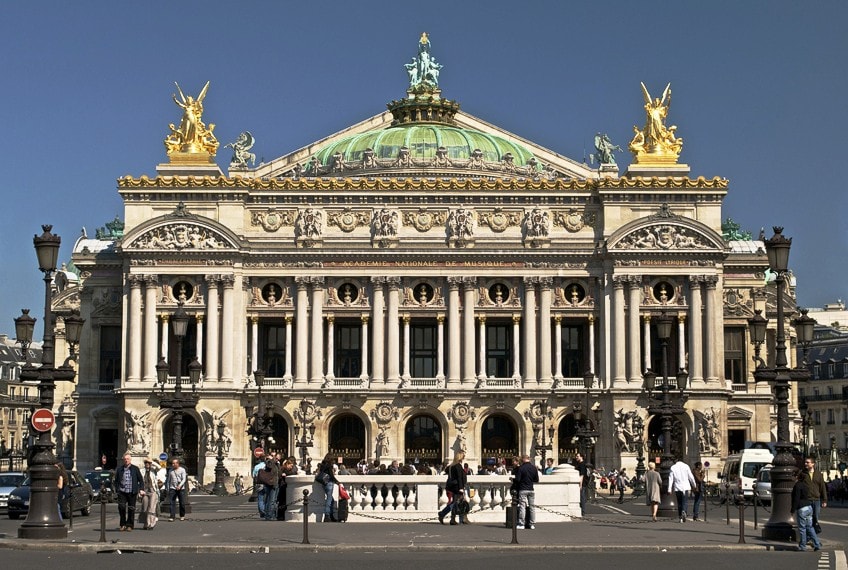
The location was designed for the emperor’s entourage and the aristocratic Belle Epoque audience to promenade, and the loggias, lobbies, stairs, and rotundas take up more space than the theater itself. Charles Garnier oversaw the sumptuous decorating designs, commissioning figurative academic statues and paintings from a variety of sculptors and painters.
Castel Béranger (Paris, France)
| Year Completed | 1898 |
| Architect | Hector Guimard |
| Purpose | Residential building |
| Location | Paris, France |
Hector Guimard was the founder of French Art Nouveau, and his most apparent legacy is the ornate entrance to the Paris Métro. In the prestigious Auteuil neighborhood of Castel Béranger, he constructed a spectacular Art Nouveau showcase. The structure is a rectangle with irregular windows and a diverse facade of enamel tiles, red brick, and red and white sandstone.
The intricate internal stairway is made of red sandstone and is covered with bespoke rich wallpapers and textiles, as well as a mosaic that has been inventively ornamented with copper and steel.

Hector Guimard followed the ideals of French Art Nouveau, in which ornamentation was an intrinsic part of the structure. He was inspired by notions denying uniformity and symmetry, as were many of his contemporaries. Guimard’s aesthetic language draws inspiration from flora and organic shapes in abstracted two-dimensional patterns. Because of its abundance of swirling chimeric images, it was dubbed the “House of Devils” at its opening. Despite being labeled “seditious” and “demented” by critics, it was voted the most magnificent facade in Paris in 1898.
That concludes our look at French architecture styles through the ages. The architecture of France did not only impact French architects, but the style influenced architecture worldwide. If you ever have the opportunity to visit France, take the time to explore some of the famous French buildings we covered today.
Frequently Asked Questions
What Is Unique About French Architecture?
When we hear of French architecture, we immediately think of a few unique types that emerged here. As you might assume, many areas of France have their own distinct architecture, which you’ll come across on occasion. This would include Provence’s Roman/Italian-influenced design and the Normandy residential design, which has houses and structures with visible rafters in a variety of designs and colors, capped by a pitched roof.
What Is a Maison de Maître?
A maison de maître refers to a master’s home and is often located in a village or town. It’s a mansion with a symmetrical façade; it’s exquisite and reflects the owner’s position, who might be a local squire or a humble landowner. Inside, rooms feature high ceilings and decent proportions, and each level normally has four rooms. There might be two or three levels, as well as attic rooms. Even in the heart of the city, maisons de maître frequently have a huge garden or a small park.
Justin van Huyssteen is a freelance writer, novelist, and academic originally from Cape Town, South Africa. At present, he has a bachelor’s degree in English and literary theory and an honor’s degree in literary theory. He is currently working towards his master’s degree in literary theory with a focus on animal studies, critical theory, and semiotics within literature. As a novelist and freelancer, he often writes under the pen name L.C. Lupus.
Justin’s preferred literary movements include modern and postmodern literature with literary fiction and genre fiction like sci-fi, post-apocalyptic, and horror being of particular interest. His academia extends to his interest in prose and narratology. He enjoys analyzing a variety of mediums through a literary lens, such as graphic novels, film, and video games.
Justin is working for artincontext.org as an author and content writer since 2022. He is responsible for all blog posts about architecture, literature and poetry.
Learn more about Justin van Huyssteen and the Art in Context Team.
Cite this Article
Justin, van Huyssteen, “French Architecture – History of Building Styles in France.” Art in Context. July 12, 2022. URL: https://artincontext.org/french-architecture/
van Huyssteen, J. (2022, 12 July). French Architecture – History of Building Styles in France. Art in Context. https://artincontext.org/french-architecture/
van Huyssteen, Justin. “French Architecture – History of Building Styles in France.” Art in Context, July 12, 2022. https://artincontext.org/french-architecture/.




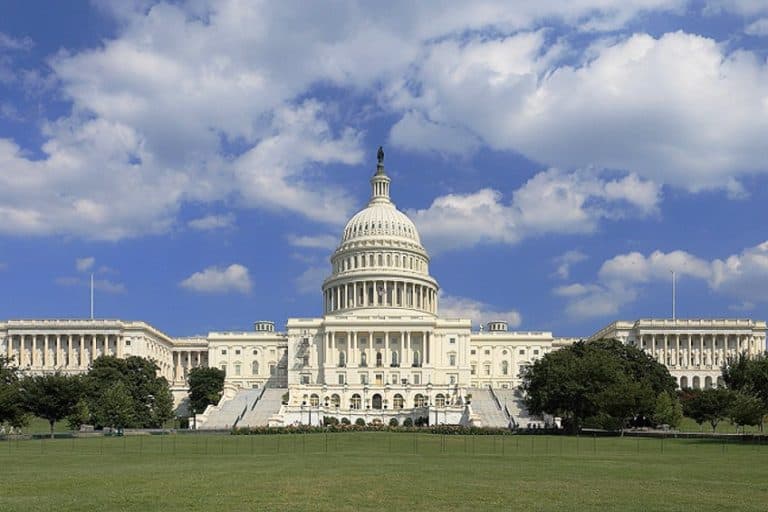


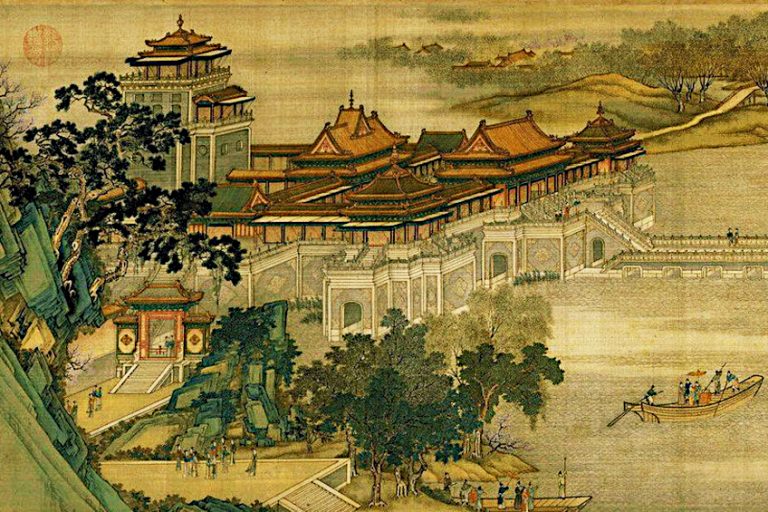


Fantastic! This article is worth reading.